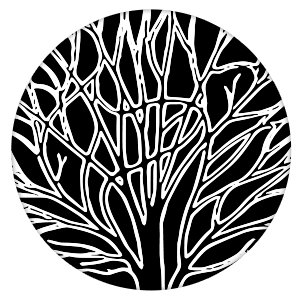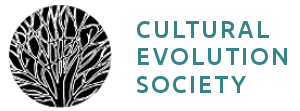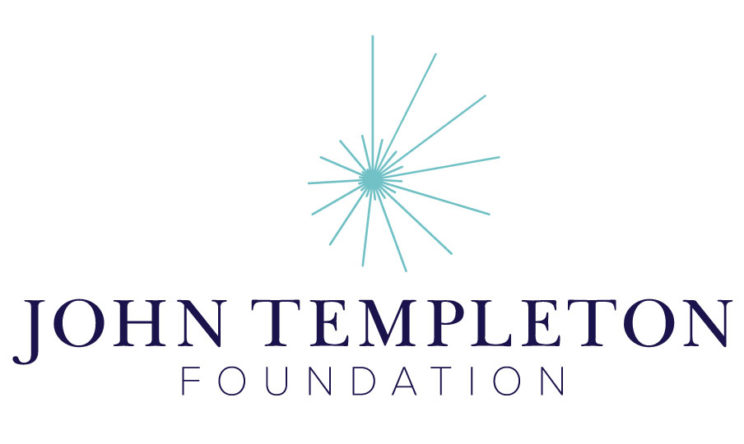Dynamic Models of Human Systems
Dynamic Systems Thinking and Modeling: Narrative and Graphic
Interdependent Systems Processes
By Cheryl Genet, Ph.D.
Stella is the modeling program used in many dynamic system modeling scenarios. It was developed by Barry Richmond as a modelling environment for simulations. Richmond was an American systems scientist and founder and former managing director of High Performance Systems, Inc (HPS), (renamed ISEE Systems in 2004), an organization providing software and consulting services to build the capacity of people to understand and improve the workings of dynamic systems. He is known as a leader in the field of systems thinking and system dynamics.
The Dynamic Systems Thinking and Modeling graphic (below) and this narrative (in which cutouts of the graphic are provided for reference) is essentially an overview of the first chapter of Barry Richmond’s 2001 An Introduction to Systems Thinking (a guide to constructing models in Stella software). The remaining nine chapters go into detail regarding the building of Stella models, using an approach he calls “analogous to learning to write an expository composition, such as a short story or a screen play.” The relationship between story and the models is key to the thinking processes in developing a model to study possible system outcomes.
The three interdependent systems processes, THINKING, COMMUNICATING, and LEARNING, are self-reinforcing and they need to evolve for learning to take place. We construct mental models—selective abstraction of reality—then we simulate them to make meaning and gain new understanding of what we are experiencing (p. 4). Richmond quotes W. Edwards Deming to illustrate how mental models are simplifications and, as such, omit many aspects of the realities they represent: “Mental Models are selective abstractions. All Mental Models are wrong. Some are useful!”
 Constructing Mental Models is the first of two activities that comprise THINKING (the first interdependent process). Constructing Mental Models requires two (fundamental) Sub-activities: Selecting and Representing. First we must select what to include in our mental models, then we must determine how to represent that which we included. To accomplish this first activity of constructing, we must ask three Fundamental Questions: The first one is: What to include (or leave out), which requires consideration of an additional Two Questions: How broadly to cast our net (Horizontal) and how deep to drill (Vertical) (pg. 10). Answering these fundamental questions requires SYSTEMS THINKING SKILLS development—“informed by ‘good practice’ principles, and then honed through repeated practice” (p. 10)
Constructing Mental Models is the first of two activities that comprise THINKING (the first interdependent process). Constructing Mental Models requires two (fundamental) Sub-activities: Selecting and Representing. First we must select what to include in our mental models, then we must determine how to represent that which we included. To accomplish this first activity of constructing, we must ask three Fundamental Questions: The first one is: What to include (or leave out), which requires consideration of an additional Two Questions: How broadly to cast our net (Horizontal) and how deep to drill (Vertical) (pg. 10). Answering these fundamental questions requires SYSTEMS THINKING SKILLS development—“informed by ‘good practice’ principles, and then honed through repeated practice” (p. 10)
The answer to the Horizontal question (#1) about what to include, is guided by the first three of eight systems thinking skills identified by Richmond: 10,000 meter (1), “Big Picture” thinking; viewing Systems as Causes (2) with self-generating elements to counter “vertical bias.” Also considered are external forces (not generated within the system), which must be excluded (to close the system). The Vertical question (#2) answer is guided by Filtering (3). Dynamic thinking filters the non-essential elements of reality and “encourages one to ‘push back’ from the events and points, to see the pattern of which they are a part. The implication is that mental models will be capable of dealing with a dynamic, rather than only a static, view of reality” (pg.13).
 Constructing’s second Sub-activity is Representing, which leads to the next two Fundamental Questions: How to represent what we have decided to include and How do they relate to one another (pg. 4). The graphic indicates that we cannot proceed with the second of the two thinking activities, Simulating Mental Models, until the three Fundamental Questions are answered, the mental model is available, and actual outcomes are possible. These can also activate a feedback process. “Simulating yields conclusions that, among other things, help us to make decisions. But … simulation outcomes play another important role in the THINKING process. They provide feedback to the Selecting and Representing activities …. Simulation outcomes that make no sense, or are shown to have been erroneous, are a signal to go back to the drawing board” (pg. 6).
Constructing’s second Sub-activity is Representing, which leads to the next two Fundamental Questions: How to represent what we have decided to include and How do they relate to one another (pg. 4). The graphic indicates that we cannot proceed with the second of the two thinking activities, Simulating Mental Models, until the three Fundamental Questions are answered, the mental model is available, and actual outcomes are possible. These can also activate a feedback process. “Simulating yields conclusions that, among other things, help us to make decisions. But … simulation outcomes play another important role in the THINKING process. They provide feedback to the Selecting and Representing activities …. Simulation outcomes that make no sense, or are shown to have been erroneous, are a signal to go back to the drawing board” (pg. 6).
Simulating Mental Models activates (through the Selecting and Representing Sub-activities) three more of Richmond’s eight SYSTEMS THINKING SKILLS: Operational Thinking (4), Closed-loop Thinking (5) and Non-linear Thinking (6). Since Richmond spends subsequent chapters on developing Operational Thinking (4) skills—that is, to effectively “speak/write” in the language of stocks and flows (pg. 17)—this number four skill has been moved to the end of the row in the graphic, which allows it to connect to a summary of the Operational Thinking chapters (Above #4 in the Process: Operational Thinking). Closed-loop Thinking (5) on the other hand, first requires considerable thought about causal one-way thinking, what Richmond calls the “laundry list” approach, which is static in nature. Only then does he show how this type of thinking differs from cyclical, or closed-loop thinking, which is dynamic and views reality as an ongoing process.
Closed-loop and Non-linear Thinking (6) skills allow the anticipation of unintended consequences and short-run/long-run trade-offs (pg.22). Linear cause-and-effect assumptions are replaced with cause-and-effect feedback loops, which “as they interact with waxing and waning strength, create non-linear behavior patterns—patterns that frequently arise in both natural and social systems” (pg.23). This also makes it possible to capture delays in the system, which are an important factor in the representation of relationships in mental models—a critical part of Operational Thinking (4).
Constructing and Simulating Mental Models are important mental processes for model making, but, as Richmond points out: “Our brains have not yet evolved to the point where we can reliably juggle the interplay of lots of variables in our heads”(p. 28).
 As vital as these processes are, serious errors can be made. At some point the models need a language and a container to work out errors and to facilitate the last two self-reinforcing processes (Communicating and Learning): A language—stocks and flows—and model mapping software such as Stella.
As vital as these processes are, serious errors can be made. At some point the models need a language and a container to work out errors and to facilitate the last two self-reinforcing processes (Communicating and Learning): A language—stocks and flows—and model mapping software such as Stella.
Stocks and Flows are a language that is both visual and operational and facilitates mental simulation. They are an Icon Based Lexicon that allows cross-disciplinary discussion, since the content is independent of disciplinary language.
 Stocks, represented by a rectangle (a holder) are the reservoirs, the state of being in time, the stuff. “At any time, they house the net of what has flowed in, minus what has flowed out” (p. 36). Flows, on the other hand, track changes and what causes them. They both facilitate Operational Thinking (4).
Stocks, represented by a rectangle (a holder) are the reservoirs, the state of being in time, the stuff. “At any time, they house the net of what has flowed in, minus what has flowed out” (p. 36). Flows, on the other hand, track changes and what causes them. They both facilitate Operational Thinking (4).
Stella software (and other similar programs), serves as a “sanity-check” on one’s mental simulations—a “fitness center for strengthening mental simulation ‘muscles’” according to Richmond (p.29). Such software facilitates the seventh of the SYSTEMS THINKING SKILL: Scientific Thinking (7)—that is, rigorous simulation practices. This is much like developing a theory and controlling the variables.
 COMMUNICATING is the next process in the trio of the THINKING/COMMUNICATING/LEARNING system. A significant advantage of stock and flow models is that they facilitate feedback through scrutinizing of one another’s mental models and associated simulation outcomes (p. 29). Developing abilities to give and receive feedback on mental models is essential to Bootstrapping Learning and creating “cross-curricular leaning synergies” (p31). That is, continually stretching the horizontal perspective. This is accomplished by developing the Empathizing (8) capabilities of the final SYSTEMS THINKING SKILL—increasing capacity to listen, and to articulate clearly. Richmond believes that the stock and flow generic language associated with Systems Thinking, and developing the essential communicating skills is not only the path to Learning, but “can play and important role in raising … levels of both comfort and confidence in moving more freely across disciplinary boundaries” (p.30).
COMMUNICATING is the next process in the trio of the THINKING/COMMUNICATING/LEARNING system. A significant advantage of stock and flow models is that they facilitate feedback through scrutinizing of one another’s mental models and associated simulation outcomes (p. 29). Developing abilities to give and receive feedback on mental models is essential to Bootstrapping Learning and creating “cross-curricular leaning synergies” (p31). That is, continually stretching the horizontal perspective. This is accomplished by developing the Empathizing (8) capabilities of the final SYSTEMS THINKING SKILL—increasing capacity to listen, and to articulate clearly. Richmond believes that the stock and flow generic language associated with Systems Thinking, and developing the essential communicating skills is not only the path to Learning, but “can play and important role in raising … levels of both comfort and confidence in moving more freely across disciplinary boundaries” (p.30).
 LEARNING is the bottom line of the three interdependent processes, which “are intimately intertwined” (p.32) (and self-reinforcing). This encompasses both Self-reflective Learning and Other-Inspired Learning. The closing of the learning loop requires full “organizational learning.” Richmond defines this as “learning that is captured, and then somehow stored, outside the bodies of the individuals who created and make use of it” (p.33). To create an “extra corporeal” reservoir of collective understanding/knowledge can be facilitated by “organizational learning infrastructure” such as a set of Stella Models.
LEARNING is the bottom line of the three interdependent processes, which “are intimately intertwined” (p.32) (and self-reinforcing). This encompasses both Self-reflective Learning and Other-Inspired Learning. The closing of the learning loop requires full “organizational learning.” Richmond defines this as “learning that is captured, and then somehow stored, outside the bodies of the individuals who created and make use of it” (p.33). To create an “extra corporeal” reservoir of collective understanding/knowledge can be facilitated by “organizational learning infrastructure” such as a set of Stella Models.
The way Richmond sums this up seems analogous to a basic concept of Cultural Evolution. It is a process where 1) Learning can be captured and stored 2) outside the bodies of the creators/user to create 3) collective understanding that transcends individuals, 4) ratcheting understanding because it is housed extra-corporeally. Each set of models (infrastructure)
would be used to predict what will occur (not in a numerically precise way, but in a qualitative sense) in whatever context it is serving. A process would be in place to monitor actual outcomes versus model-generated predictions. When discrepancies between the two arise, the assumptions in the model would be scrutinized, discussed, and then adjusted accordingly. Over time, the model would continuously improve as a representation of the reality about which learning is being accumulated. (p.33)
An Introduction to Systems Thinking is actually a guide to using Stella software to render mental models. But for Richmond, the real issue is “internalizing the associated Systems Thinking Skills [eight of them across the bottom of the graphic], as well as the language and method.” He says this is “conceptual, not mechanical work (p. 34). He emphasizes that Stella models (and all systems thinking models) are not limited to physical things, but can be applicable to non-physical “states of being,” and are therefore useful across the social sciences, as well as the physical sciences and engineering (p.35).
Reference
Richmond, Barry. 2001. An Introduction to Systems Thinking. Stella. High Performance Systems, Inc
This project was supported by Grant #61105 from the John Templeton Foundation to the University of Tennessee, Knoxville (PIs: S. Gavrilets and P. J. Richerson) with assistance from the Center for the Dynamics of Social Complexity and the National Institute for Mathematical and Biological Synthesis at the University of Tennessee, Knoxville.

The Cultural Evolution Society's Online Learning Tutorial Series is licensed under a Creative Commons Attribution-NonCommercial-ShareAlike 4.0 International License. For designers' contact information, click here.



